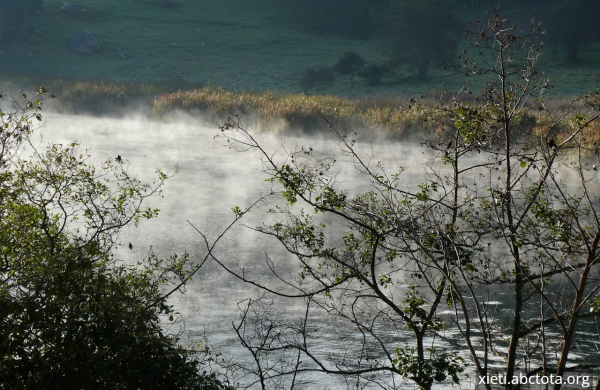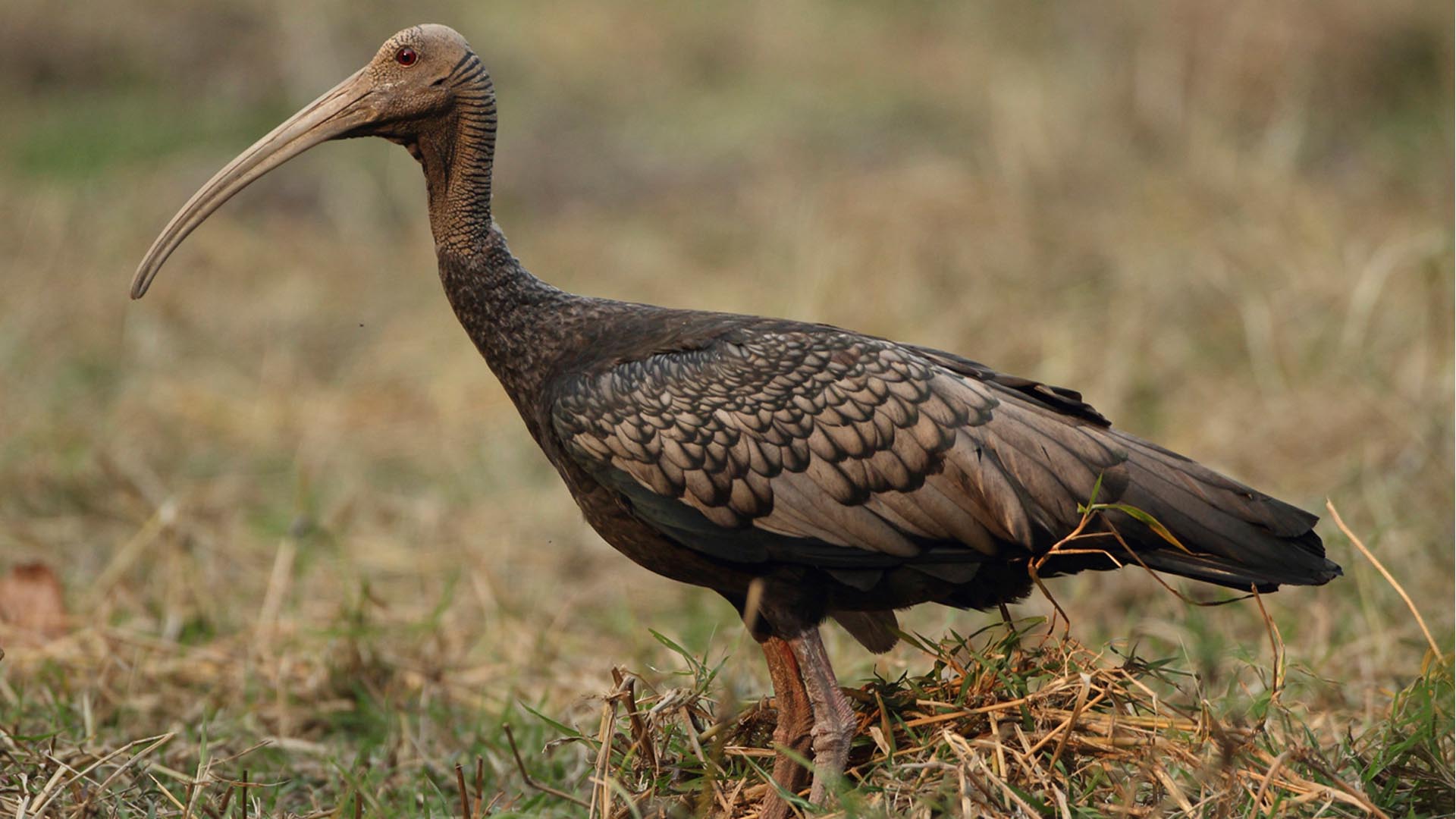

WCS works with the Royal Government of Cambodia and community partners to conserve some of the rarest bird species at several sites across Cambodia. These rare birds attract specialist bird tourists, and so WCS has helped local communities develop the capacity to host tourists. Site-based tourism services are managed by an elected Community Protected Area Committee trained by WCS and its partners. Tourists contribute directly to the local economy through payments to villagers for services such as accommodation, guiding, cooking, transportation and Village Development Funds.
Tmatboey ecotourism community was established in 2003 with support from WCS and handed over to community committee in 2006 to operate the ecotourism service and communicate directly with tour operators. The Tmatboey community is located in Tmatboey village, Pring Thom commune, Choam Ksan district of Preah Vihear province, inside Kulen Promtemp Wildlife Sanctuary, in some of the last deciduous dipterocarp forest left in Southeast Asia. This is a vital habitat for numerous species considered critically endangered by the IUCN Red List, including White-shouldered and Giant Ibis.
In 2003, WCS staff discovered a small breeding population of the critically endangered white-shouldered ibis (Pseudibis davisoni), consisting of a single breeding pair, at Tmatboey. At the time, this was the only known breeding site for this species in mainland Asia. Since 2003, however, the population of this species in the area has grown from this single nest and one breeding pair to six nests and 35 individuals in 2017. WCS’s monitoring has also shown that breeding populations of the giant ibis are widespread in the area, with 25 pairs monitored in 2017.
This innovative partnership model combines capacity building and community engagement, provides direct income for communities through tourism services and a ‘Conservation Contribution’ tied to sightings of wildlife, infrastructure development to enhance sustainable tourism opportunities, and funds direct conservation such as bird survey, nest protection and forest patrol inside community protected area.
Bird conservation is linked to tourism through conservation agreements which are designed to protect the rarest waterbirds (No 1. and 6. in the EDGE List) and other species. The agreement stipulates that tourism revenue is subject to the villagers agreeing to manage habitats and protect key species, through a village land-use plan and a ‘no hunting’ policy.
The rare ibises and other species attract birdwatchers. They pay into the community development fund depending, how many species they see. Only birdwatchers who see either or both Critically Endangered Ibises, Giant and White-shouldered, pay $40 into a community development fund. However, if birdwatchers see neither giant nor white-shouldered Ibis they still pay 15$ for additional species they see. The community conducts annual meetings to discuss the use of the village development funds. Till date, they have built roads, wells, repaired school and other activities with these funds. And this leads the community becoming interested to protect and help to manage their reserve so that as many species as possibly thrive there and can be seen, leading to increasing populations of birds and improved protection status of the reserve. The Tmatboey ecotourism committee meet with the villagers, village chief and commune council, to discuss and decide how income from ecotourism is spent, in order to ensure that it benefits everyone. In the past, they have decided to contribute to infrastructure within their village including pagoda, schools, roads and wells.
We have plans to improve the facilities and services at Tmatboey so that we can attract more tourists who like more comfortable accommodation. WCS and SVC are also working on developing additional tourism products, loosely based on the Tmatbauy model.
The Tmatboey model was so successful, it has been replicated across seven other sites, demonstrating a successful model for ecotourism development in Cambodia that has a measurable impact. SVC now supports nine ecotourism communities, including those living in Kulen Promtep Wildlife Sanctuary, and Chhep Wildlife Sanctuary in Preah Vihear the north, and Keo Seima Wildlife Sanctuary in the east, a rare evergreen forest home to Asian elephant, Yellow-cheeked crested gibbon, Black-shanked douc, and Green peafowl.
With our support, these communities generate sustainable income by providing tourism services. A Conservation Contribution is made to the village’s development fund based on sightings of wildlife- this fund is used by the community for development including schools, roads, and digging wells. These payments create a strong connection between the money generated from tourism and the conservation of wildlife – incentivizing local people to join and protect the endangered wildlife and the wider habitat. The model could easily also be replicated in other countries in certain variations, and that WSC is keen to help” exporting” the model.
Read also: WCSCaseStudy-Cambodia-ecotourism-Final
This LT&C-Example is also featured by PANORAMA as one of their protected area solutions: http://www.panorama.solutions/en/content/profiting-eco-tourism-cambodia
© Linking Tourism & Conservation (LT&C) 2019
We are grateful that you support the work and mission of LT&C! We accept donations through Credit Card, PayPal or international bank transfer:

Donate through Credit Card
Please click the Donate button and then choose your PayPal account
Bank details:
Cultura Sparebank
Pb. 6800, St. Olavs plass
N-0130 Oslo
Name: Linking Tourism & Conservation,
Account no.: 1254 05 95168
IBAN: NO8712540595168
BIC/SWIFT: CULTNOK1
Routing BIC: DNBANOKK
Please mark payments with your name and/or email address
Sign up for an LT&C membership by filling in the details below.
Would you like your LT&C-Example/Initiative to be listed on our website? Please fill in the form below.